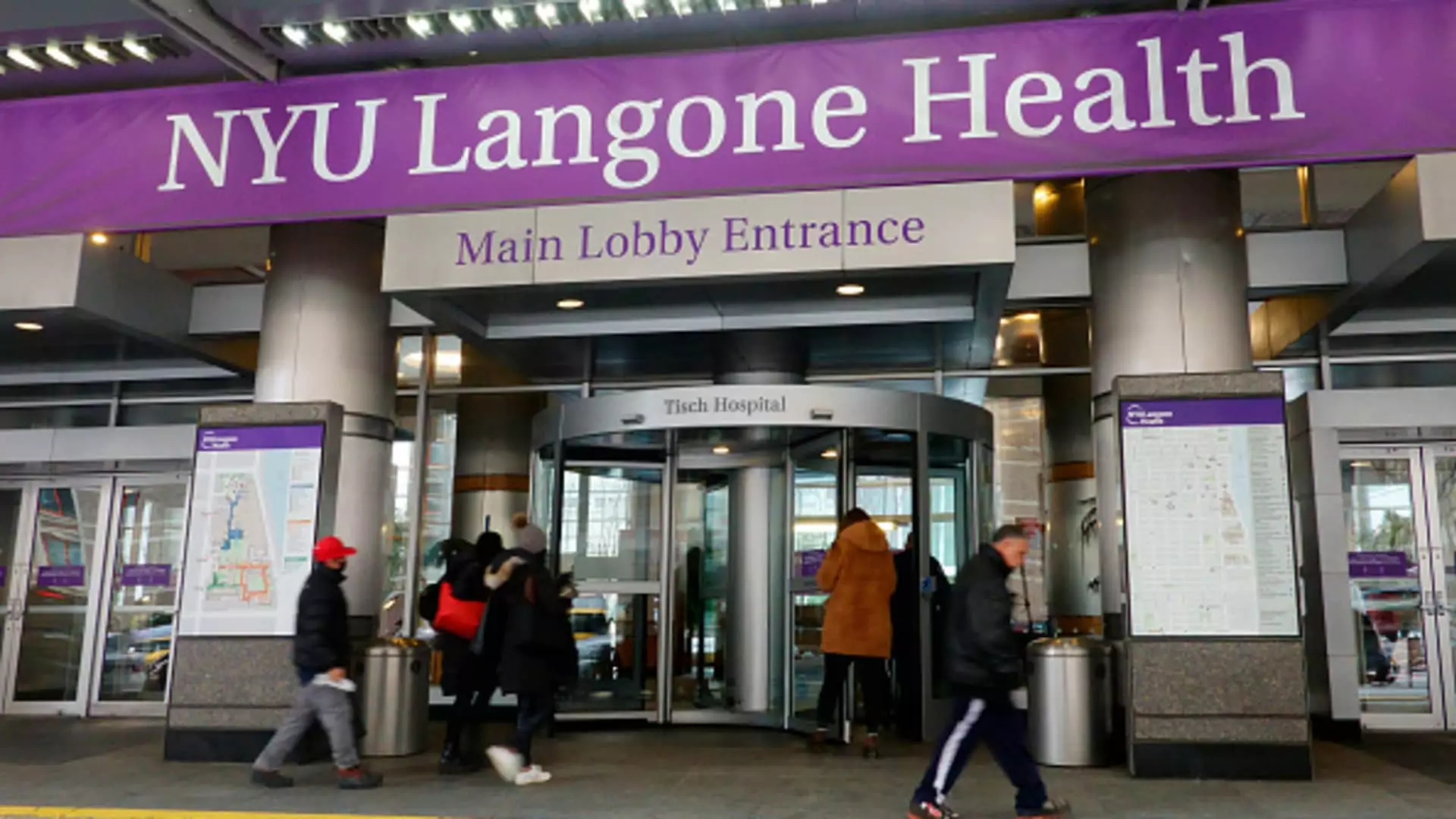In 2018, New York University’s Grossman School of Medicine broke onto the scene with an audacious initiative: full-tuition scholarships for all medical students, regardless of their financial backgrounds. This bold move was viewed as a monumental step towards making medical education more accessible. However, a deeper analysis reveals a far grimmer picture—one where equity takes a backseat to the logistical complexities of this newfound accessibility. While the program did indeed attract a flood of applications, it also uncorked a troubling trend: the demographic makeup of incoming students shifted significantly, with those identified as “financially disadvantaged” plummeting from 12% in 2017 to a mere 3% by 2019.
This disheartening revelation begs the question: Who does “tuition-free” really benefit? In an age where higher education is often heralded as the great equalizer, it appears that this well-intentioned initiative may actually reinforce existing barriers instead of dismantling them.
Financial Disadvantage: The Hidden Costs of Accessibility
The critique isn’t merely academic; it’s about real lives and futures. Jamie Beaton, co-founder of Crimson Education, points out a pivotal flaw: the intensified competition that tuition-free programs generate often favors middle-income families—those who can afford to invest in costly preparatory resources such as tutoring and extracurricular activities. This competitive imbalance only serves to perpetuate a cycle of privilege where those already endowed with resources become the actual beneficiaries of what was designed to level the playing field.
It’s ironic, isn’t it? The rich get richer, and in the pursuit of equality, many lower-income students are left grappling with the fallout of a redefined educational landscape. What good is a tuition-free education if the very students it aims to support find themselves frozen out by the sheer competitiveness fueled by the increased numbers of applicants?
The Dilemma of Elite Education
Additionally, universities like Harvard have announced similar no-tuition policies for families earning up to $200,000. While this is surely a step in the right direction, the phrase “the rich get richer” echoes loudly in this context. Beaton warns that these policies could inadvertently cause lower-income applicants to lose out to their better-off counterparts. Such observations are troubling; instead of reducing income-based disparities, these “affordability incentives” might just shift the inequity from one demographic to another.
Considering that many prestigious institutions need middle- and upper-class students for future donations, there’s a palpable tension between altruism and the capitalist motives of elite education. The underlying system is rigged to favor a status quo that ultimately prioritizes financial sustainability over social equity.
Debt Dilemma: Stressing Out the Students
In an era where student debt looms like a dark cloud, the promise of tuition-free education appears to illuminate the path to success. Yet, as Eric Greenberg, president of the Greenberg Educational Group, explains, a high volume of applications often backfires on those from lower-income families. It’s ironic that overcoming financial barriers has become interwoven with rising stress levels regarding competitiveness.
The escalating costs of college tuition have long outpaced inflation, with averages skyrocketing to nearly $58,600 for private institutions. Families today find themselves entangled in an affordability crisis that has rendered savings plans ineffective. More strikingly, while significant institutions may offer generous aid, many are still anchored firmly to their financing models, rendering them incapable of adopting generous packages for all students equitably.
The Affordability Arms Race and Its Pitfalls
The ongoing “affordability arms race,” as described by educational expert Hafeez Lakhani, creates a paradoxical environment. While colleges compete to present themselves as more affordable, the outcome often leads to an increased applicant pool, fueling a fierce escalation of expectations and competitiveness that ultimately excludes the most vulnerable. Many institutions simply lack the financial means to offer equitable solutions for all; with over 95% of four-year colleges in the U.S. depending on tuition, a solid foundation for fair revenue generation appears tenuous at best.
That said, alternatives are available. James Lewis, co-founder of the National Society of High School Scholars, encourages students to move beyond the “I can’t afford that” mentality to explore the myriad financial resources available—scholarships, work-study opportunities, and tailored financial aid packages can sometimes bridge the gap, albeit not always in a straightforward manner.
The irony of pursuing a “free” education that becomes less accessible for those it initially aimed to serve is haunting. It raises profound questions about our understanding of equity, accessibility, and the real cost of ambition in the evolving landscape of higher education.

